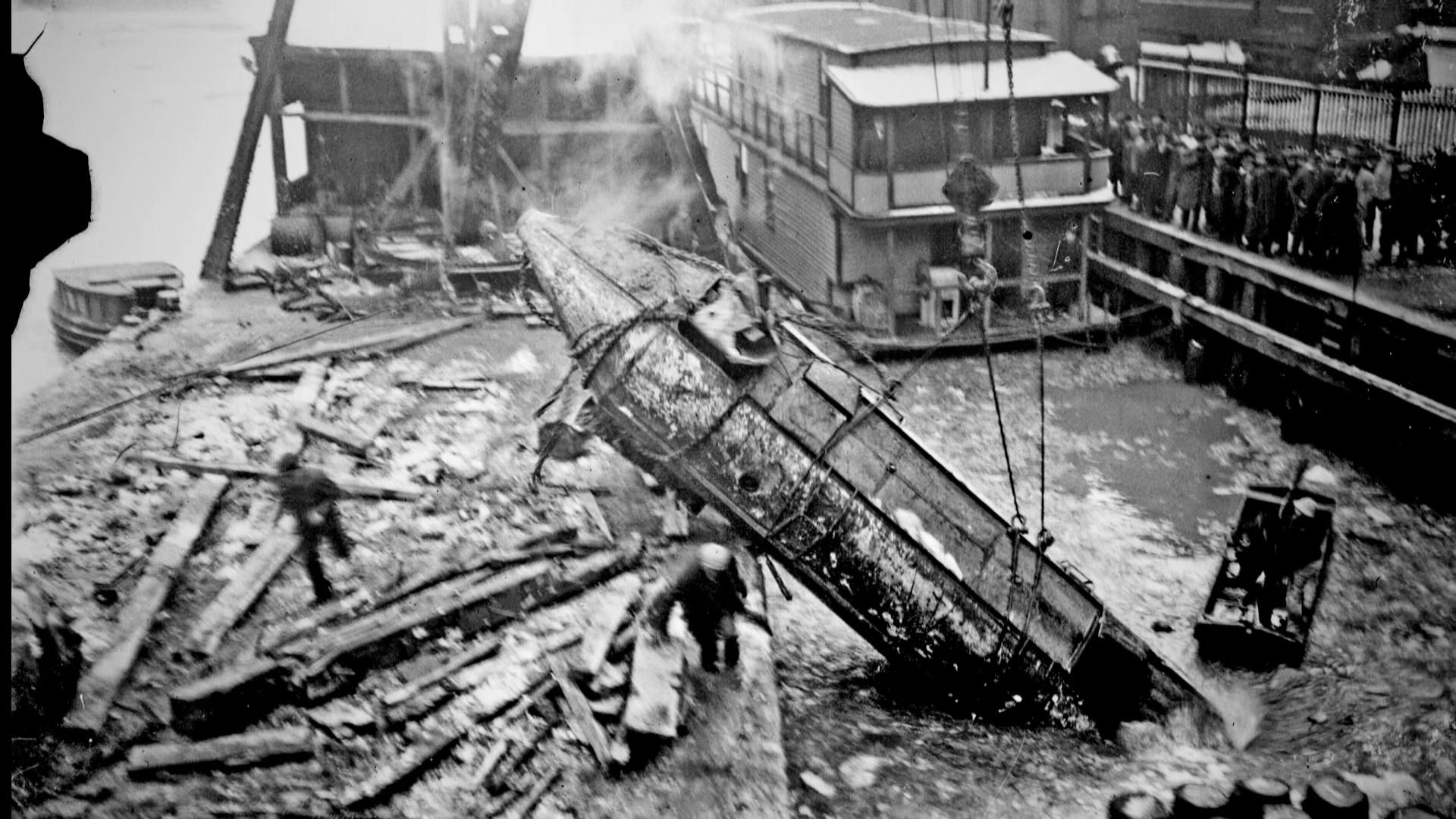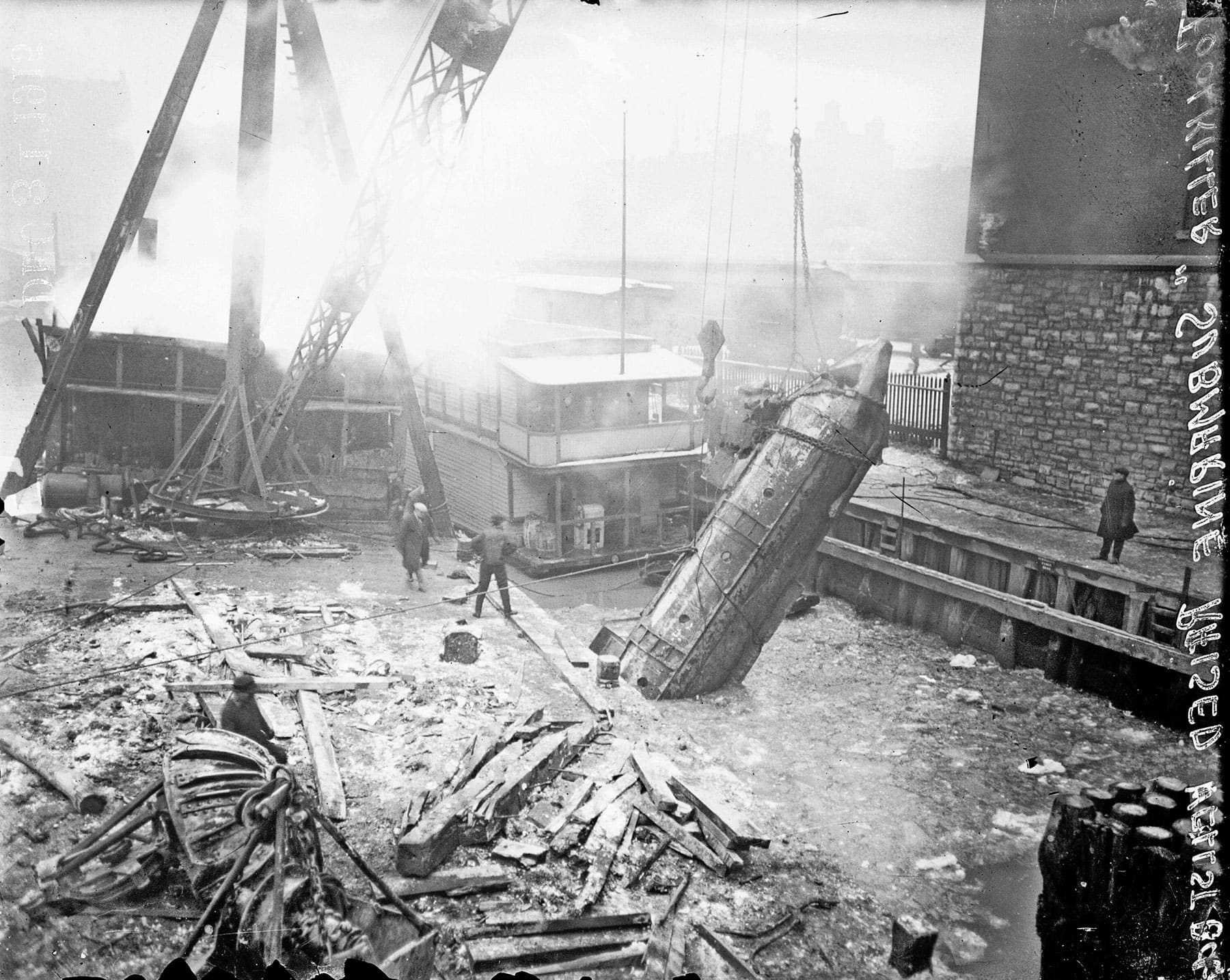The Mystery:
What was the mysterious sunken vessel discovered at the bottom of the Chicago River, and how did it get there?


On a frigid November day in 1915, a diver named William “Frenchy” Deneau was laying cable along the bottom of the Chicago River when he reportedly found a mysterious 40-foot-long vessel. What was the vessel, and how did it get there? Geoffrey Baer gets to the bottom of these questions.
On a frigid November day in 1915, a diver named William “Frenchy” Deneau was laying cable along the bottom of the Chicago River when he reportedly found a mysterious 40-foot-long vessel. Deneau, who had already garnered media attention for being one of the divers who recovered bodies following the tragic Eastland Disaster a few months prior, was allowed to salvage the vessel and claimed that it contained human and dog remains. Deneau believed he had found an “ancient submarine” called the Foolkiller built by a Danish bookkeeper – and part-time daredevil named Peter Nissen. “[Nissen] would build these weird boats. The first couple of them he used to try to go down the Niagara rapids,” Mark Chrisler, host of the podcast The Constant, told Geoffrey Baer. The “weird boats” in question were called Foolkiller 1, Foolkiller 2. After his successful Niagara Rapids adventures, Nissen built a third Foolkiller for a widely publicized attempt to cross Lake Michigan in 1904. But Nissen’s attempt failed, and his body and vessel washed ashore in Michigan a few days after he went missing. Over a decade later, Deneau possibly forgot or misremembered the story of Nissen’s demise, and instead believed the vessel he found on the bottom of the Chicago River was Nissen’s ill-fated Foolkiller number three. In reality, Nissen’s vessel looked nothing like the one Deneau discovered. Nissen’s vessel was more of a watermelon-shaped balloon that rode atop the water, rather than below it. “The idea is it would roll and roll and roll, and it was all wind powered,” Kori Rumore Finley, archival reporter at the Chicago Tribune told Geoffrey Baer. Regardless, Deneau publicized the vessel he discovered as the Foolkiller and implied that the remains he found inside were Nissen’s. And to cash in on his discovery, Deneau put the vessel on display in an arcade downtown. But if that wasn’t Nissen’s Foolkiller 3, then what did Deneau find? Chrisler, who researched the Foolkiller story for a decade, got a big break in the case from one of his podcast listeners, who sent him a photo of a 1906 vessel called a “life-saving power boat” that looked nearly identical to what Deneau had discovered. “I knew that it had to be the real deal. Within a few hours, I located the patents online,” Chrisler said. One mystery remains: What happened to Deneau’s vessel? After he displayed it at the arcade, it appeared at a circus in Iowa, and then later at Riverview Park in Chicago. But after that, it vanished.



